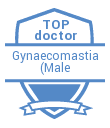Contact us today to schedule your appointment!
-
Call Us at +91-96000-58899
-
Call Us at +91-94440-35171
-
Call on Viber +91-89395-02777
-
Chat on WhatsApp +91-89395-02777
-
Chat on Telegram +91-96000-58899
-
Contact us today to schedule your appointment!
Jump To
There are many causes for hair loss in men or women.
Making the decision for a hair transplant. As soon as the hair loss problem has been identified, most doctors advise starting medical treatment of hair loss at the earliest. The first line of treatment usually consists of multivitamin supplements containing Biotin, and serum containing concentrated growth factors and peptides. If the candidate does not show desired results, then medicines such as finasteride and minoxidil are started for men with hair loss to help preserve or partially reverse thinning hair.
(A word of advice: As far as possible, it is preferable to avoid these two medicines as there are some known side effects of finasteride and minoxidil)
Even if a patient decides to proceed with surgical hair restoration, medical treatment may slow or prevent additional hair loss in the future. Patients may have hair restoration surgery at any age after the early 20s, but the optimum age for surgery differs from patient to patient depending on various factors. Most patients have their first procedure while they are not yet completely bald, so that they can use existing hair to help camouflage the procedure. However, as hair loss tends to be both gradual and progressive, it is often unwise to start surgical treatment in a patient who is too young.
Modern techniques of surgical hair transplantation can very effectively restore lost hair and replace or reshape your hairline with your own natural, growing hair, which needs no more care than the ordinary washing, styling and trimming you have always done.
Hair transplants can be used to fill in the front hairline and thicken the front half of the scalp, and medical treatments can be used to maintain hair behind the transplants and to possibly enhance the long-term results of surgery. Our hair restoration surgeon at Chennai Plastic Surgery will work with you to design an individualized plan to fulfill your specific needs.
At Chennai Plastic Surgery, the elements that our hair transplant surgeon assesses to determine whether you are a good candidate for surgical hair restoration include the following:
Making an accurate diagnosis and making treatment recommendations require a thorough examination by our hair transplant surgeon and a frank discussion of the pros and cons between the patient and the surgeon.
You will be advised to stop smoking at least four weeks before surgery. Besides, the surgeon shall advice you to avoid certain medications such as Aspirin (blood thinning agents).
At Chennai Plastic Surgery, Follicular Unit Transfer can take between 3–8 hours and are usually performed using local anaesthesia on an out-patient basis (in a dedicated sterile environment), often with some supplemental oral or IV medication for sedation. There is typically little discomfort during the surgical procedure. You can arrive in the morning and can have your procedure completed by afternoon.
Popularly known as the strip method, it involves the removal of a strip of skin from the back of the head. The hair follicular units are individually separated from the skin and processed. The grafts are then implanted in the recipient area. The donor areas, where the grafts have been harvested, are usually closed with sutures leaving a thin line.
The recipient sites, where the grafts are placed on top, are essentially small, superficial needle holes in the skin of the scalp. Virtually, no scar will be visible. Normally there will not be any dressing after the surgery.
At the conclusion of the procedure the surgeon usually checks the final placement of the grafts, and the doctor or an assistant then explains the postoperative instructions, which are usually supplied in written form as well.
There will be minimal bleeding after surgery in the donor as well as recipient areas that stops with minimal compression. Antibiotics and analgesics will be given for 5 days. Patients are usually advised to take mild shampoo bath from 5th day. Sutures will be removed on 14th day. Medical management will be started by our dermatologist after a month. Within 24 hours small crusts will form on each graft, which are then shed in approximately 4–14 days. The grafted hair will often start to grow by 10 –16 weeks after the procedure and will continue to grow.
The patient must understand that transplantation redistributes existing hair follicles and cannot create new hair follicles.
Hair transplantation is a relatively safe procedure in the hands of the right hair transplant surgeon. There are minor complications like infection and bleeding that might occur, but can be addressed.
For more information on our procedures or if you are interested in scheduling an appointment please reach us here, or by clicking on the QR code below. We will let you know if you are a good candidate for the procedure, and can recommend any additional treatments that can help you reach your beauty goals.








